Webinars
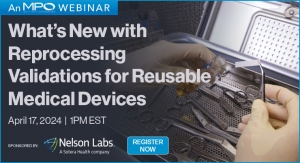
What’s New with Reprocessing Validations for Reusable Medical Devices
REGISTER NOW FOR OUR FREE WEBINAR - APRIL 17, 2024; 1PM EST!
There have been many great strides surrounding the guidance for reprocessing (cleaning, disinfection, and/or sterilization) validations of reusable medical devices, such as AAMI ST98:2022 and recent updates to established standards like AAMI TIR12:2020 and ISO 15883-5:2021. It can be difficult to navigate these updates and ensure that your reusable devices have the proper reprocessing validation. In addition, there are still gaps in guidance that have led to “gray areas” of reprocessing. These gray areas include reprocessing validations for single-use devices provided non-sterile, reprocessing validations for novel reusable devices being used for clinical trials, reprocessing instructions for at-home devices, and wearable non-critical devices. While we can rely on published documents to provide guidance in these gray areas, there are questions that need addressing to ensure the safety of the devices associated with these situations.
Key Learning Points:
- Review the major updates for cleaning and disinfection validations for reusable medical devices.
- Understand how different guidance documents linked to reprocessing of reusable devices are aligned.
- Review the gaps these “gray areas” bring to reprocessing validations and possible solutions.

Nelson Labs is a global leader in microbiological and analytical chemistry testing and advisory services for the medical device and pharmaceutical industries. We serve over 3,000 customers across 13 facilities in the United States, Mexico, Asia and Europe. With a comprehensive array of over 900 laboratory tests and the expertise of Regulatory Compliance Associates, a recognized leader in life science consulting, we support our customers from initial product development and sterilization validation, through regulatory approval and ongoing product testing for sterility, safety and quality assurance. We are regarded as a best-in-class partner with a strong track record of collaborating with customers to solve complex issues.

SPEAKERS:
Branna Barber - Consulting Study Director at Nelson Labs
Griffin Cammack - Expert Technical Consultant at Nelson Labs
Sean Fenske - Editor-In-Cheif of MPO & ODT
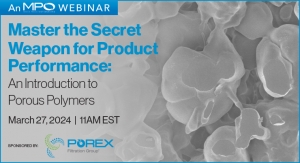
Master the Secret Weapon for Product Performance: An Introduction to Porous Polymers
NOW AVAILABLE ON-DEMAND
Porous polymers are the little-known science inside many of the medical devices and diagnostic tests we use every day, providing key functionalities to products as diverse as inhalers, arterial blood gas syringes, and molecular diagnostic analyzers. Perfect for engineers who either have a new product concept or need to fix a design or manufacturing problem, this webinar will explain how to select the right type of material and technology for your application. Attendees will learn how the multiple types of porous technologies can be used to absorb, apply, diffuse, filter, vent or wick in various types of medical devices & consumables and diagnostic tests & analyzers.
This webinar is sponsored by Porex Corporation, a business of Filtration Group. Porex is a global leader in developing and manufacturing custom-engineered porous polymer solutions that turn into high-value functional components in our customers’ end products. By combining our material science expertise in absorption, diffusion, filtration, wicking and venting with our global manufacturing capability, we help our customers overcome their complex product development challenges and turn their product ideas into reality. As a partner for 17 out of 20 of the world’s leading medical device companies and brands, Porex designs custom-engineered components specifically for the end device. Whether the medical device involves inhalation, injection, diffusion, or topical application, porous polymer technologies can be used for particulate filtration, flow metering, sterility, and even sound diffusion. Porex engineers leverage decades of experience with many types of devices to innovate with our customers to develop the perfect component for their unique products.

SPEAKERS:
Katlin Lumme
Director of Engineering, Porex
Sean Fenske
Editor-in-Cheif, MPO/ODT
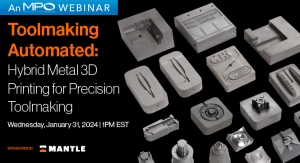
Toolmaking Automated: Hybrid Metal 3D Printing for Precision Toolmaking
NOW AVAILABLE ON - DEMAND
Hear first-hand from Westminster Tool, a Connecticut-based toolmaker specializing in complex injection mold tooling for the medical device industry, on their additive journey and why they invested in a Mantle system. Westminster Tool will share case studies—with data—on how they are adding value with their Mantle system.
Speakers:
Hillary Thomas
Vice President, Westminster Tool
Sean Fenske
Editor-in-Chief, MPO/ODT

MPO Summit 2023
NOW AVAILABLE ON-DEMAND
MPO Summit, the primary focus is on facilitating education and networking for all attendees; we kept this mission at the top of our minds for this year’s event. We added a panel session to our typical agenda to further the candid engagement and discussion we’ve found attendees crave at this event. With so many challenges facing the industry currently, we wanted to be sure we covered as many topics as possible through input from as many voices as we could.
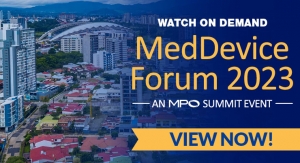
MedDevice Forum 2023
NOW AVAILABLE ON-DEMAND
Focusing on the world of outsourcing for medical device manufacturing coupled with a keen awareness of innovation in the space, Medical Product Outsourcing’s conference series has provided the medtech industry with the most comprehensive programs for more than 15 years. These highly informative symposiums address critical issues impacting multiple stakeholders within the industry. In 2023, the MedDevice Forum—a medical device manufacturing conference event—will take place in San Jose, Costa Rica. Modeled after the industry leading MPO Summit, MedDevice Forum will offer a more intimate setting for attendees seeking solutions to industry challenges. Graciously hosted by the Costa Rica Marriott Hotel Hacienda Belen, this event will simultaneously highlight the appeal of the region for medtech while tackling a number of the most significant issues for today’s medical device companies.
Against the backdrop of such an impressive location, this interactive networking and educational event will partner local experts with out-of-state industry thought leaders—OEMs, contract manufacturers, suppliers, consultants, members of the investment community, and academia—for a unique forum to discuss critical industry topics and offer tools to compete and grow in today’s challenging business climate.
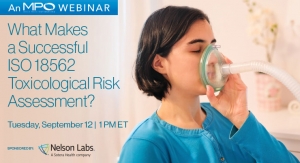
What Makes a Successful ISO 18562 Toxicological Risk Assessment?
NOW AVAILABLE ON-DEMAND
ISO 18562 provides standards for evaluating the biocompatibility risks associated with the gas pathway of medical devices for respiratory care. The tests associated with the 18562 series assess risks that are related to the volatile organic compounds (VOCs), particulates, and leachables in condensate that have the potential to be emitted or leached from the device during its intended use. Anything that may be emitted during use may ultimately have contact with the patients or end users, and the Toxicological Risk Assessment (TRA) then assesses the risks.
By attending this webinar, you will learn:
- Various test methods associated with ISO 18562
- Interpretation of results
- Risk identification
- Possible risk mitigation


SPEAKERS:
Nathan Fredrick
Toxicologist, Expert Advisory Services
Sean Fenske
Editor-in-Chief, MPO/ODT
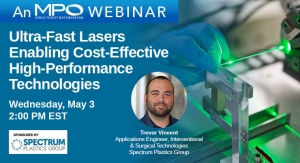
Ultra-Fast Lasers Enabling Cost-Effective High-Performance Technologies
NOW AVAILABLE ON-DEMAND
Ultra-fast lasers have transformed the industry and continue to grow capabilities in cutting edge, high-performance medical technologies while also improving cost efficiencies. This presentation will specifically focus on different laser processing techniques and how they can excel in different applications.
We will showcase how ultra-fast lasers can be used in a variety of high-precision medical products with different processing techniques. For instance, cutting stents out of bioresorbable polymers, create spiral patterns into liners, drill hole arrays in tubing and filters/spargers, drill features into implantable bone screws, selectively ablate the OD tubing, and even drill or cut features in medical balloons. We’ll also discuss how these techniques can bring cost efficiency and incredibly high-precision together to create a desirable service.
SPONSORED BY:
Spectrum’s history spans over 60 years of applications expertise including precision extrusion, specialty injection molding, blown film extrusion and conversion, medical balloon fabrication, laser processing, additive manufacturing, and complex assembly of catheters and other devices. Today, Spectrum is a leading full-service partner for the development and manufacturing of critical polymer-based components and finished devices for medical and other demanding applications. With 20 locations and over one million square feet of manufacturing space in six countries worldwide, we have the resources to solve customers’ most challenging problems with proven quality, responsiveness, innovation, and technical expertise.
PRESENTED BY:

SPEAKERS:
Trevor Vincent
Applications Engineer – Interventional & Surgical Technologies
Spectrum Plastics Group
Editor-in-Chief
MPO/ODT













